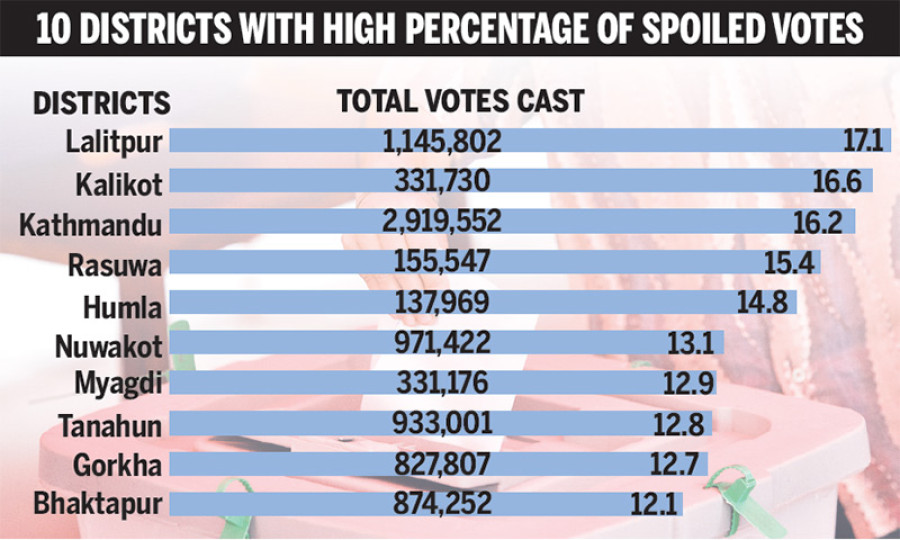Miscellaneous
Void votes: Lalitpur, Kathmandu top list
Kathmandu and Lalitpur are on top of the list when it comes to invalid votes for the first phase of local elections held in 34 districts on May 14.
Prithvi Man Shrestha
Kathmandu and Lalitpur are on top of the list when it comes to invalid votes for the first phase of local elections held in 34 districts on May 14.
Though officials at the Election Commission said they were yet to assess the reasons behind the high number of invalid votes, particularly in the districts in Kathmandu Valley, they pointed to factors like large ballot papers, voter educators’ inability to get to maximum number of people and political parties’ failure to reach out to voters among others.
Lalitpur has topped the list with 17.1 percent spoiled votes. A total of 1,145,802 votes were cast in Lalitpur.
In Kalikot, of the 331,730 votes cast, 16.6 percent were declared invalid. Kathmandu is ranked third with 16.2 percent stray votes out of 2,919,552 votes cast.
Average invalid votes in 34 districts stood at 11.18 percent, according to the list compiled by the EC. The average turnout for the first phase of local elections was 73 percent.
“The percentage of void votes is higher in the districts where parties had formed electoral alliance,” said EC Spokesperson Surya Sharma.
The CPN-UML and Rastriya Prajatantra Party (RPP) had forged an electoral alliance in Kathmandu and Lalitpur for the posts of mayor and deputy mayor. The RPP had later complained that UML supporters had cast vote for “candidates where the UML had not fielded anyone”, in an indication that such voting pattern could have resulted in invalid votes.
Bhaktapur, the third district of Kathmandu Valley, witnessed 12.1 percent invalid votes.
EC officials said that many election educators “could not meet the real voters” in Kathmandu Valley “as they were not at home”.
According to election observers, “unwillingness of Kathmandu-based voters to learn from voter educators” could also have contributed to high number of invalid votes in the Valley.
Besides, the size of ballot papers, which were too big, and large number of electoral symbols also could have resulted in invalid votes, said Gopal Krishna Siwakoti, general secretary of Nepal Election Observation Committee (NEOC), one of the election observers, adding that senior citizens in particular might have faced difficulty.
The percentage of void votes in the first phase of local elections is highest in recent election history of the country.
Invalid votes in the 2013 Constituent Assembly (CA) elections in 2013 stood at 4.9 percent under the direct election system. The rate of invalid votes in 2008 CA elections stood at 5.15 percent.
In view of higher number of invalid votes in the first phase polls, the EC has said voter educators must reach out to every household for the second phase of polls.
It has also launched voter education programmes in Plus 2 colleges and mock voting sessions in different places.
But Siwakoti said there was a need to launch decentralised voter education programmes through credible institutions which have vast experience of election engineering.
“We must promote electronic voting machine as a long-term solution,” he said.




 14.12°C Kathmandu
14.12°C Kathmandu










